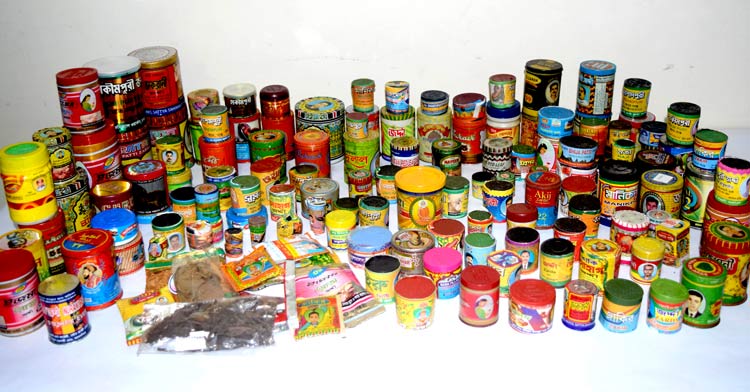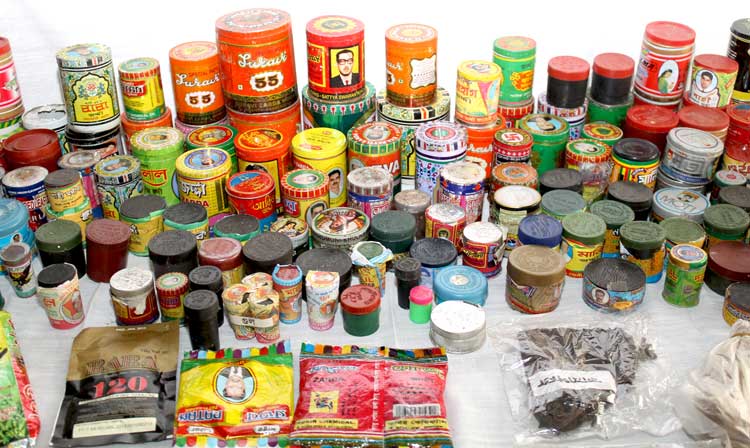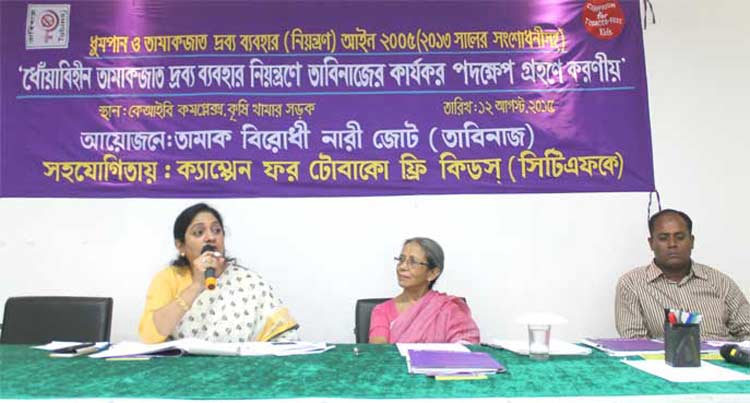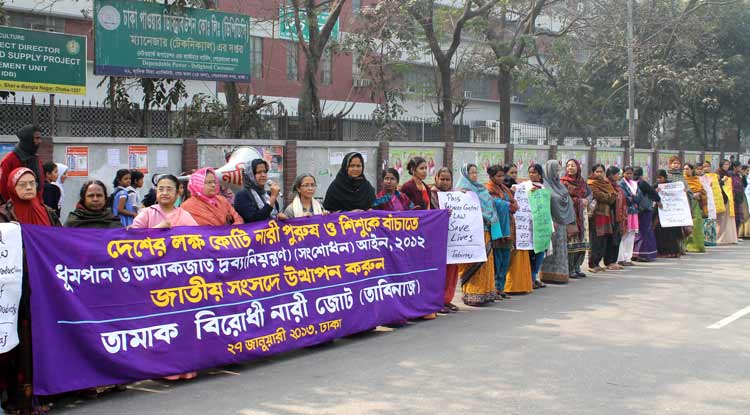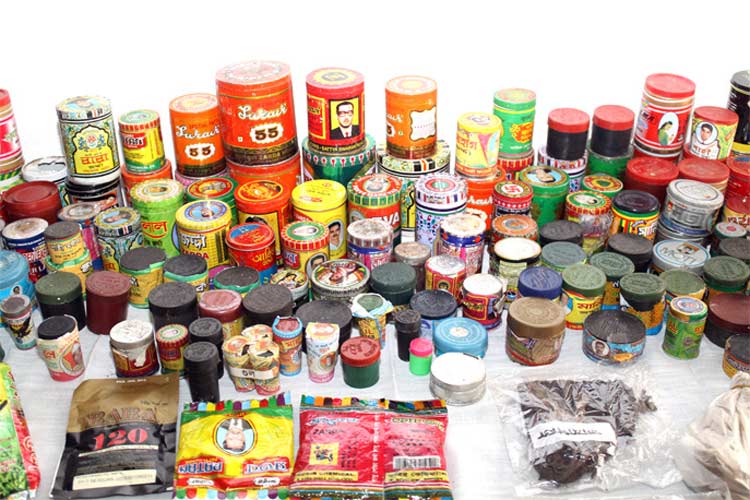Smokeless Tobacco in Bangladesh: Zarda, Sadapata and Gul
Smokeless tobacco (SLT) constitutes more than 50% of tobacco use among men and women in Bangladesh. Yet, it has received less attention in tobacco control policies and actions because of perceived less harmful health effects than smoking and social and cultural acceptance of its use in Bangladesh.
Bangladesh is one of the South Asian countries, where 80% of all smokeless tobacco are consumed as these are integral to culture, being incorporated in their traditional values, spirituality, beliefs, festivals, marriage ceremonies, lifestyle, rituals and popular entertainment [1].
Smokeless tobacco (SLT) is included in the definition of Tobacco products under the “Smoking and Tobacco Products Usage (Control) Act, 2005 (amended in 2013)”. Three most used smokeless tob (Read More)
UBINIG is awarded by the Ministry of Health and Family Welfare for its contribution on tobacco con
UBINIG is awarded by the Ministry of Health and Family Welfare for its contribution on tobacco control on the occasion of World No Tobacco Day 2016. Farida Akhter, executive director, received the award from Honorable Health Minister, Mohammad Nasim, on behalf of UBINIG.
UBINIG has been working on the issue of tobacco cultivation since 2006. UBINIG conducted wide-research on tobacco cultivation on Bandarban and Kushtia and helped tobacco farmers shift from cultivating tobaccos to food production .
Since 2011, UBINIG formed Anti-Tobacco Woman’s Alliance (Tabinaj). Tabinaj has been working tirelessly to reduce the use of smokeless in 64 districts. Tabinaj has also been assisting the government to implement tobacco control laws.
(Read More)
TABINAJ Fact Sheet: Smokeless Tobacco - Jarda, Sadapata and Gul
Bangladesh has one of the highest rates of smokeless tobacco use in the world with 28 million users. It is mostly used among the adults (27.2%). Rates among women (27.9%) are slightly higher than among men (26.4%). It is also higher than the smoking rates (23%). The only difference is that among adult tobacco users men as smokers is 44.7%, and as users of smokeless is 26.4%; compared to adult women as tobacco users, women as smokers is only 1.5%, and as smokeless tobacco users it is 27.9%. In general, it is men mostly, who are using tobacco products in both smoke and smokeless forms[1].
Who are the Users?
1. Rural people
Smokeless (Read More)
TABINAJ Members trained to facilitate implementation of Law
Control of the use of Smokeless tobacco (SLT) products has not been focused enough as a priority at national and international level. On global scenario, there are about 300 million SLT users in 70 countries, among them 89% are in India. India and Bangladesh make up 80% of the smokeless tobacco users of the world. The Tobacco control movement is more concentrated on “smoke-Free” rather than ‘tobacco free’ which may include both smoke and smokeless products.
The inclusion of inclusion of smokeless tobacco products such as Jarda, Sada-pata and Gul in the definition of Tobacco in the amended Law (2013) is a step forward in the Tobacco control movement. However, because of social and cultural acceptability of the open use of Jarda, sadapata with betel leaf (Read More)
Tamak Birodhi Nari Jote: Women’s Alliance in Tobacco Control, Bangladesh
Tabinaj is a network of Women’s organizations and individuals and has become part of Tobacco Control Group in Bangladesh bringing in new dimension in women’s role as advocates agaginst tobacco consumption.
Tabinaj is the first and only women’s alliance around the country active in 52 out of 68 districts of Bangladesh against tobacco use and cultivation. It was formally launched on 6th March, 2011 on the occasion of International Women’s Day (8th March).
Tabinaj is affiliated with UBINIG (Policy Research for Development Alternative), a research organization engaged in conduting intensive research on tobacco cultivation and its impact on food production since 2006 with supprt from International Development and Research Centre (IDRC), Canada. Tabinaj a (Read More)
Zarda and Gul: Smokeless Tobacco Products in Bangladesh
Introduction
Bangladesh is one of the 11 countries in South and South East Asia Region, which comprises 90 percent of global smokeless tobacco users. Given the high number of users and the serious health consequences of tobacco use, these countries have set a target to reduce 30 percent in prevalence among persons over 15 years of age. In terms of number, almost 250 million adults consume smokeless tobacco in these 11 countries. These countries are Bangladesh, Bhutan, Democratic People's Republic of Korea, India, Indonesia, Maldives, Myanmar, Nepal, Sri Lanka, Thailand and Timor-Leste (primenews.com.bd, Accessed on September 11, 2013)
As women are the major users of smokeless tobacco products, this investigative study c (Read More)
